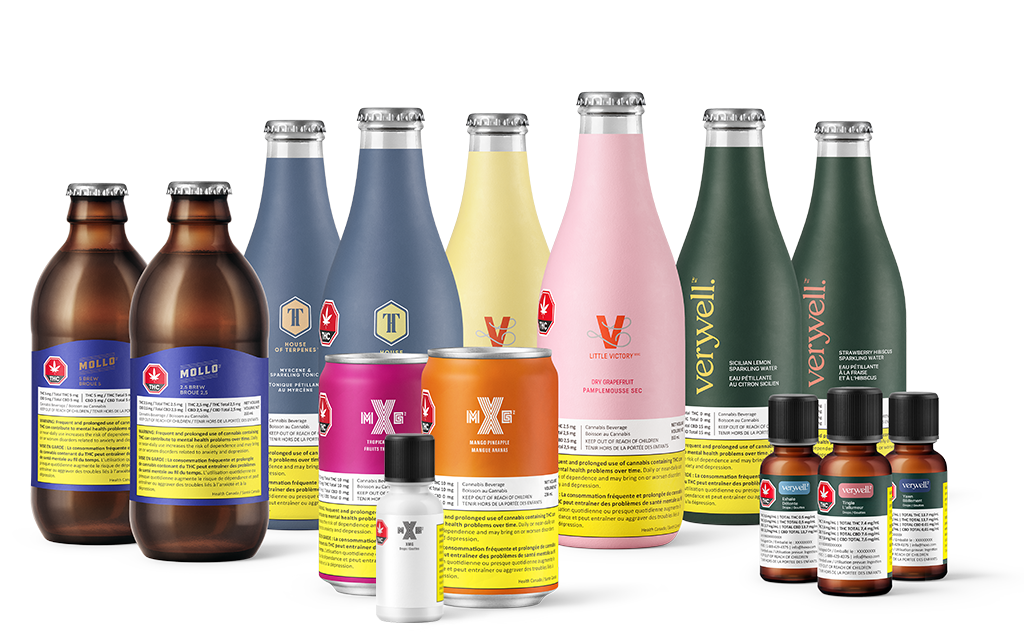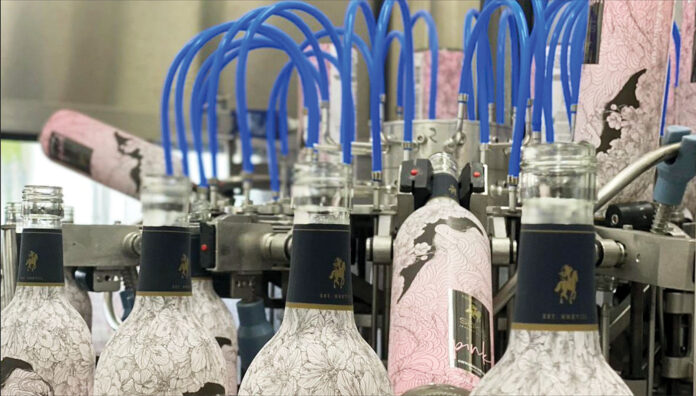It’s been almost a century since the end of Prohibition. Since then, cannabis has been one of the precious few examples of consumer goods that have jumped the fence from illegal and taboo to mainstream and socially acceptable.
For many beginners, the obvious first step is edibles, which are familiar, discreet, and easy to ingest. Edibles consumption requires no training, no practice, and no special techniques like rolling a joint might. But some stumble even here: A brownie may take effect in forty minutes, sixty minutes, or even a couple hours. That’s a tough and often confusing wait for those new to cannabis.
Enter cannabis-infused beverages. They check all the boxes: easy to consume, packaged in an everyday can, consistent and doseable, with great flavor. Cannabis beverages provide a safe method of consumption that’s a bit healthier than inhalables, allowing consumers to enjoy the familiar elevated experience in an even more familiar form—a drink. Plus, low-dose beverages are extremely sessionable because onset is typically quick, meaning consumers easily can find their perfect dose.
These first-timer-friendly factors alone may account for the incredible statistics: According to analytics firm Headset, beverages are selling at six times the rate they were three years ago. Across California, Colorado, Nevada, Oregon, and Washington state, sales were up 40 percent in 2020 compared to 2019. In the third quarter of 2021, sales were more than 55 percent higher than in the same period in 2020.
But it’s not just the obvious “oh, that’s easy” mentality driving the uptick in the cannabis beverage market. There’s something else going on . . . and it happens during manufacturing.
Emulsification
As it turns out, making cannabis accessible really is about making its active ingredients accessible. And that happens through a process called emulsification.
Emulsion is not a new concept. Extra ingredients have been blended into food and drinks for decades through a process in which one otherwise “unmixable” ingredient, such as oil, is aggressively blended into another, such as vinegar.
Without getting into the science, trust me when I say it’s a tricky thing to get right. More often than not, the result is not stable for very long, separating over time into its individual components. In particular, homemade do-it-yourself emulsions can be dangerous to the consumer—it’s hard to know exactly how many milligrams of cannabinoids are being ingested. Even when building a small business, the process is challenging to scale while retaining consistency and quality. Some companies have harmed the industry by using older, untested methods that ultimately result in unpredictable products.
To make the situation even more complicated, there’s no single ideal emulsion manufacturing process. Emulsification methods are product-specific, whether infusing alcohol-removed wine, fruit juice, seltzer, or coffee.
Emulsion science involves complex chemistry. There’s no one-size-fits-all solution, but there are three general categories, which differ in taste, appearance, onset time, and bioavailability.
- Conventional emulsifiers use synthetic ingredients. While droplet size can be ideal and appearance is clear or translucent, the taste is bitter, requiring flavor agents or taste modifiers.
- Natural emulsifiers are plant-based, and consumers are demanding them more often. Again, droplets can be incredibly small, but the end result is usually cloudy. The flavor is neutral, making this type of emulsification a good fit for a variety of products.
- Certified-organic ingredients usually create slightly larger droplets with a neutral flavor, so they’re a good match when the product manufacturer is adding their own flavor components.
Manufacturers choose the proper emulsification process and ingredients to meet their clients’ needs. Most prefer clear and tasteless, while organic sends a compelling marketing message.

Nanotechnology
One of the most exciting developments is the advent of emulsification through nanotechnology. This brings the emulsion process to an incredibly precise, stable, consistent level, providing an almost instant physiological effect through optimized bioavailability. No more waiting around, wondering when it’s going to kick in. It’s an amazingly flexible process adaptable to a diverse range of products.
Nanotechnology can be used broadly to produce CBD isolate (no THC or plant compounds), broad-spectrum (includes CBD and other cannabinoids and terpenes), and full-spectrum (usually up to 0.3-percent THC, as per most state regulations). At Vertosa, we’ve even begun to utilize premium extracts like live resin to design a true botanical-forward cannabis experience.
The upshot of all these benefits is evident: increased consumer trust and clear expectations open up the market as the broader demographics expand market potential. There’s a beverage for everyone—sweet, bitter, mild, sophisticated, outside-the-box, or familiar.
This rising tide doesn’t just help broaden a specific market. It also brings down walls, reduces stigma and fear, and allows new consumers—especially the health-conscious—to recognize cannabis can play a safe, significant role in their lives. For the first time, they easily can experiment with different dosages and cannabinoids to learn how their body reacts and determine what works best for their specific needs.
Benefits of cannabis beverages
Predictably, cannabis beverages now are challenging sales of alcoholic drinks and their well-known disadvantages: hangovers, calories, and a taste not everyone enjoys. Companies like Heineken have begun expanding their product lines to embrace this change, while others like Lagunitas jumped on the cannabis-infused beverage bandwagon in 2018.
One additional benefit goes beyond “feeling good.” When taken for therapeutic reasons, CBD is backed by promising research that shows it may improve sleep, regulate digestion, decrease chronic pain and inflammation, and help relieve numerous other ailments. We now live in a world where a delicious, ice-cold fruit drink, sipped on the porch or over dinner with no special preparation or equipment, may provide this relief.
New consumers will seek out products that provide desired mood states and then inevitably investigate other forms and components of cannabis from botanicals, terpenes, and adaptogens. This would not have been possible a few years ago with DIY emulsions, but the advanced emulsion technologies at our disposal today make it easy to incorporate these active ingredients into cannabis beverages. Thus, we’ll see an expansion of the cannabis-infused beverage category to meet the rising consumer demand for functional beverages.
We remain in the very early stages of fully understanding the cannabis plant and its value to society, but our industry is driven by entrepreneurs with a unique passion for innovation and creativity. Thanks to newer processes that ensure consistency, stability, and great flavor, cannabis-infused beverages are accelerating the journey toward a more enlightened, satisfied, and relaxed society.

Austin Stevenson is chief innovation officer at Vertosa. He leads all commercial activities, including technical sales, tactical marketing, and new business development, in addition to facilitating partnerships to produce cannabis-infused products across a variety of industries. He also leads Vertosa’s efforts to create a pathway toward financial success and opportunity for women entrepreneurs of color.








